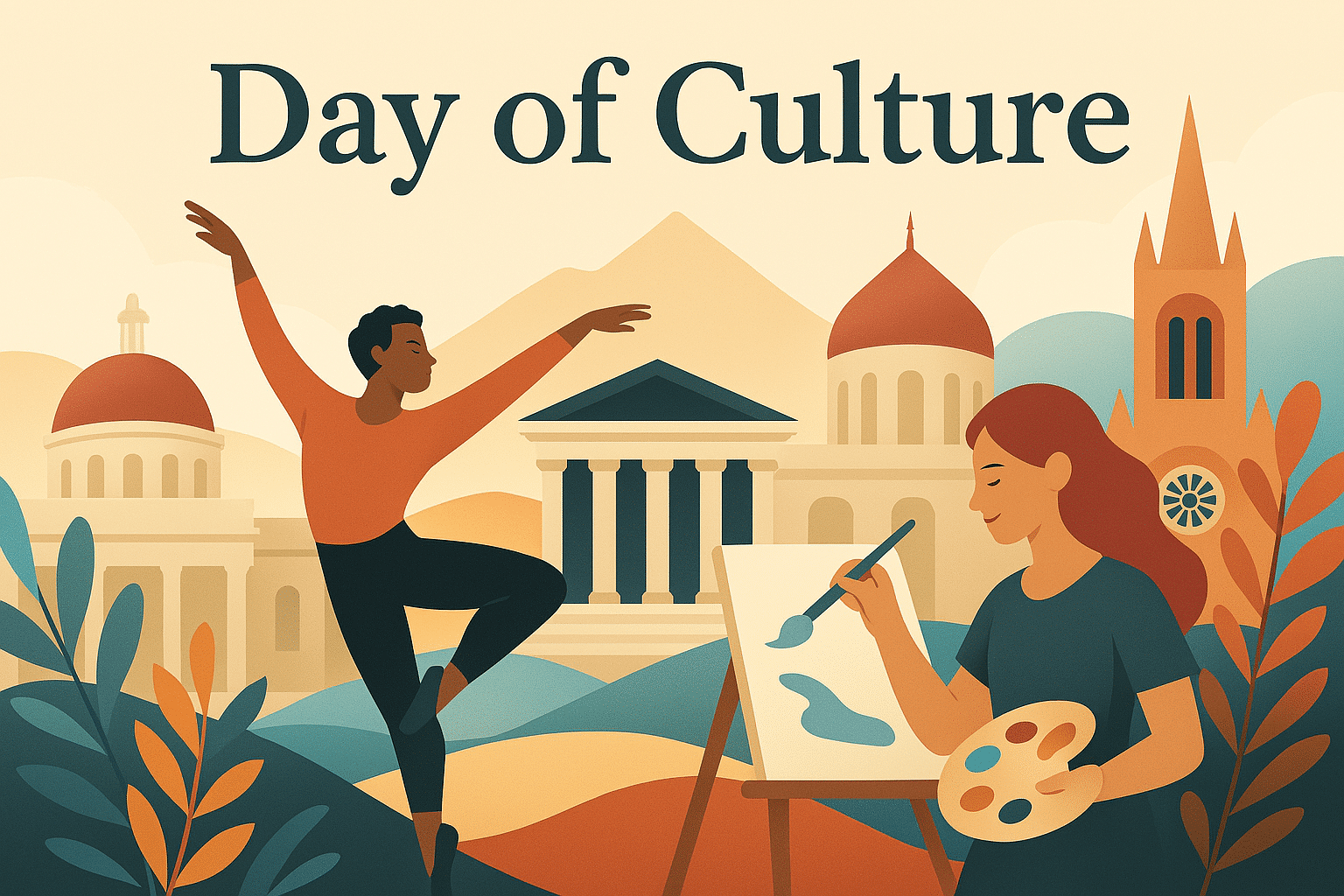What is World Day of Culture?
World Day of Culture is celebrated every year on April 15. This day is dedicated to protecting and celebrating cultural heritage in all its forms. It invites people around the world to reflect on the importance of traditions, knowledge, art, and identity. The goal is to build peace and mutual understanding through the preservation of culture.
The day is linked to the Roerich Pact, a treaty signed in the 1930s that called for the protection of cultural sites and institutions. Today, World Day of Culture reminds us that culture is not a luxury. It is essential to who we are as people and societies.
History and Origin
World Day of Culture was inspired by the Roerich Pact, signed in 1935. This agreement called on nations to protect museums, schools, and cultural monuments ; even during war. The pact introduced the Banner of Peace, a symbol still used today to show commitment to cultural protection.
April 15 was chosen as the official date to mark the signing of this historic treaty. Since then, the day has been embraced in many countries through events, exhibitions, and educational programs. Each year, it becomes an opportunity to connect generations, celebrate differences, and reflect on our shared human story.
Who participates in World Day of Culture?
- Schools and universities: Host lectures, exhibitions, and student presentations on cultural topics.
- Museums and archives: Offer special tours and spotlight rare artifacts or art.
- Cultural centers and NGOs: Organize events to showcase traditional music, dance, food, and crafts.
- Governments and embassies: Release statements, host receptions, or partner with local cultural groups.
- Artists and individuals: Share cultural expressions online or in public spaces through performance or storytelling.
Slogans and Themes
Popular themes for World Day of Culture include “Preserve the Past, Enrich the Future,” “Unity in Diversity,” and “Culture is the Soul of Humanity.” These themes highlight the value of cultural memory and the role it plays in promoting peace and connection between people. The message is clear: culture must be respected and protected.
Colors, Symbols, and Patterns
Colors
- Red: Represents creativity and the passion found in cultural expression.
- White: Stands for peace, purity, and universal understanding.
- Gold: Symbolizes the richness and dignity of cultural diversity.
Symbols
- Banner of Peace: Three red circles within a larger circle, symbolizing art, science, and religion protected by culture.
- Globe: Represents the worldwide scope of cultural protection.
- Open book: Stands for education, memory, and the transmission of culture.
Patterns
- Interwoven threads: Suggest how cultures are connected through exchange and influence.
- Mosaics: Represent different cultural elements forming a single whole.
- Traditional motifs: Used to honor regional customs and ancestral art forms.
Most Used Hashtags
- #WorldDayOfCulture
- #CulturalHeritage
- #PreserveCulture
- #BannerOfPeace
- #CultureMatters
How do you celebrate World Day of Culture?
- Attend cultural events: Join a concert, festival, or exhibition celebrating your local traditions.
- Visit museums or archives: Learn more about your country’s history and cultural treasures.
- Share cultural stories: Post family traditions, recipes, or crafts that reflect your heritage.
- Support artisans: Buy handmade items or art that preserve local skills and knowledge.
- Host a cultural workshop: Teach or learn about a traditional dance, dish, or language.
Why is World Day of Culture important?
World Day of Culture is important because it reminds us that culture connects us all. In a time of fast change and conflict, the preservation of cultural identity becomes even more urgent. This day promotes peace, respect, and solidarity by showing that our differences are a source of strength, not division.
Culture helps people feel seen, heard, and valued. Protecting it is not just about saving monuments or traditions. It is about defending human dignity. That is what makes this day so necessary ; every year, and for every generation.
Features
April 15: Day of Culture
Why do you keep falling for the same type?
Read the article Lovemaps: the hidden blueprint of our love.

